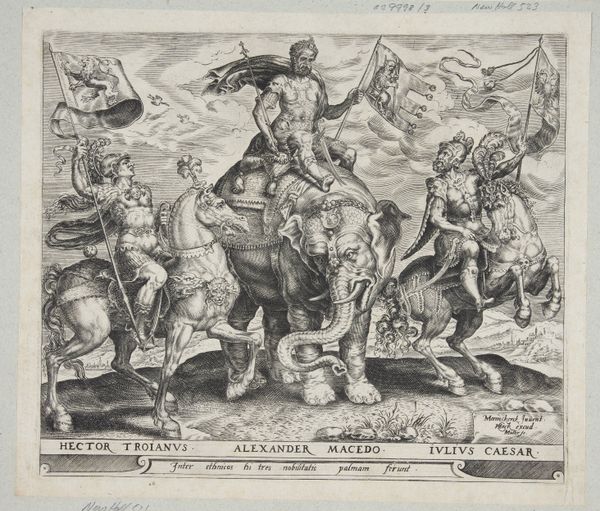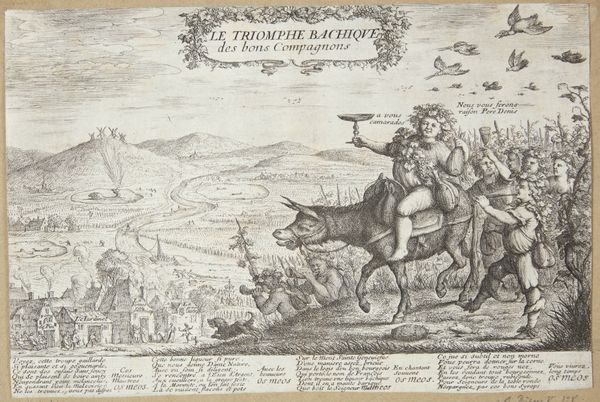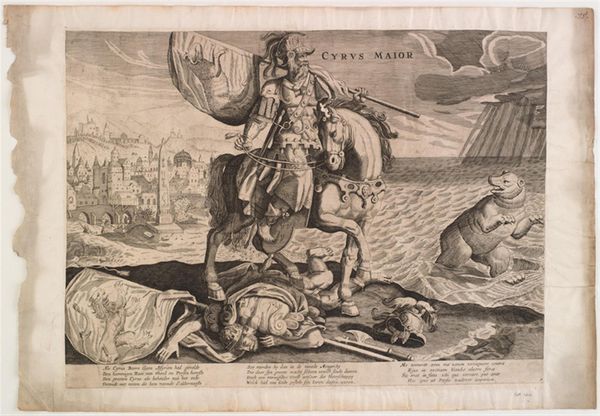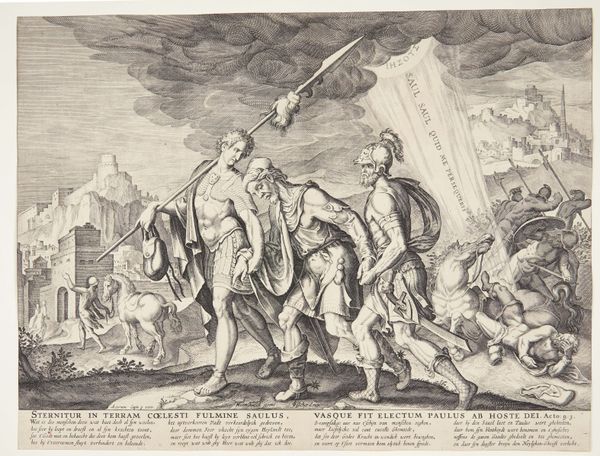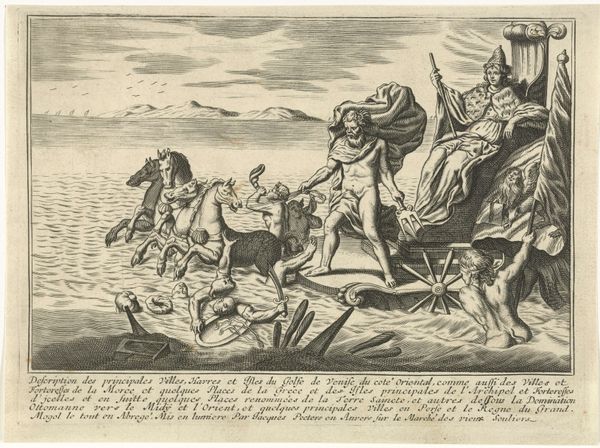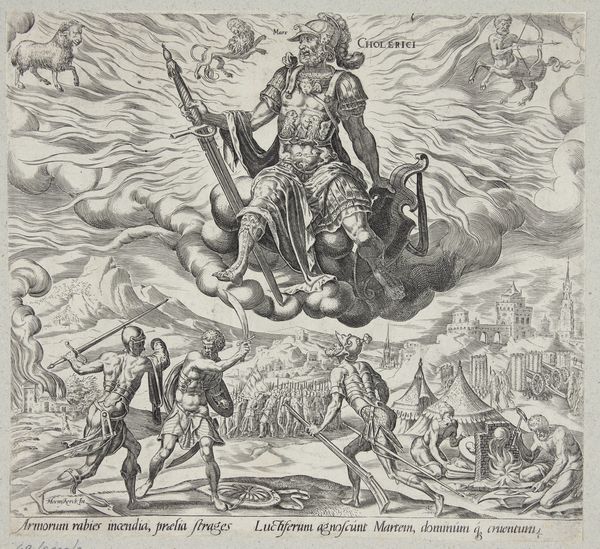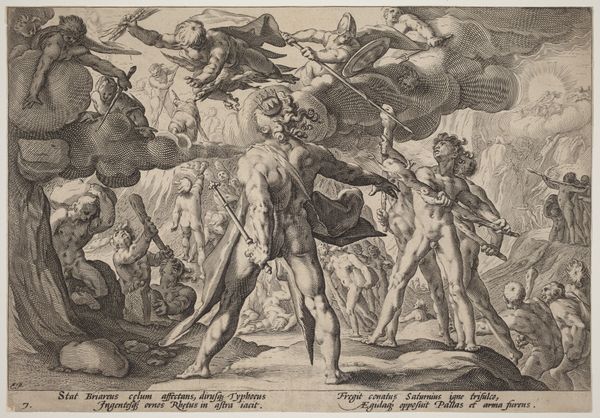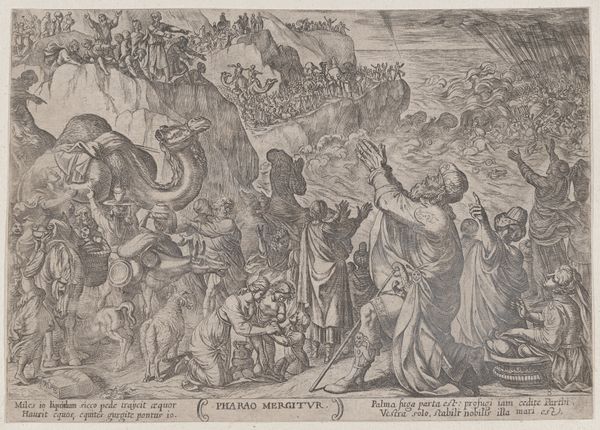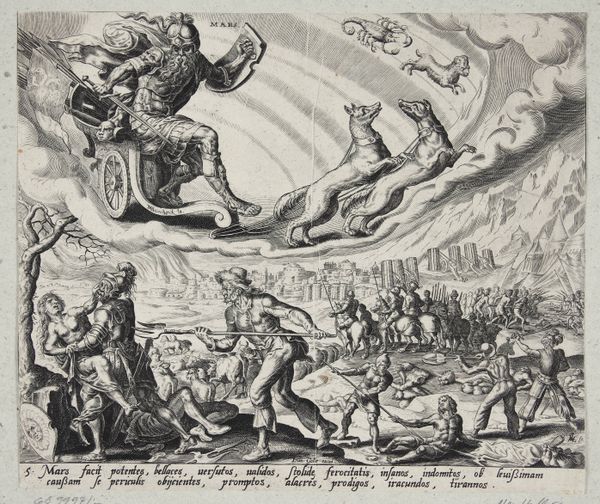
print, engraving
#
baroque
# print
#
landscape
#
figuration
#
history-painting
#
engraving
Dimensions: 403 mm (height) x 527 mm (width) (bladmaal)
Curator: Look at this, it is "Ninus of Niniveh," a 17th-century engraving. What strikes you about it at first glance? Editor: Immediately, I see the sheer dominance, this triumphant figure looming over… what is that, a defeated foe? There's such a strong statement about power being depicted here. Curator: Absolutely, the image presents a layered narrative. The central figure, Ninus, is astride his horse in full armor. Below, a fallen figure is crushed beneath the horse's hooves, symbolizing conquered lands and subjugated peoples. Editor: The power dynamic is further complicated, right? Ninus stands triumphant on the back of subjugation, the artist implicating this historical conqueror as part of violent power structures, but not to what ends? Curator: As history demonstrates time and again, it shows how systems of control legitimize violence through heroic narratives. Ninus holds a banner bearing a lion rampant as a symbol of strength, but is it actually strength when the image explicitly displays brutality? The very cityscape in the background is built on conflict. Editor: Exactly. This work forces us to confront the politics inherent in the very imagery we consume. It begs questions about who shapes historical memory and what purposes it serves. Curator: I agree completely. It reminds us of the need to critically evaluate not just the "what" but the "how" of art. By examining these power structures, we gain a greater understanding of art's role in both reflecting and perpetuating them. Editor: This engraving’s complexity extends beyond its obvious displays of control, acting as an early modern reminder of how empires legitimized violence for their time and today. I will keep thinking about that.
Comments
No comments
Be the first to comment and join the conversation on the ultimate creative platform.

